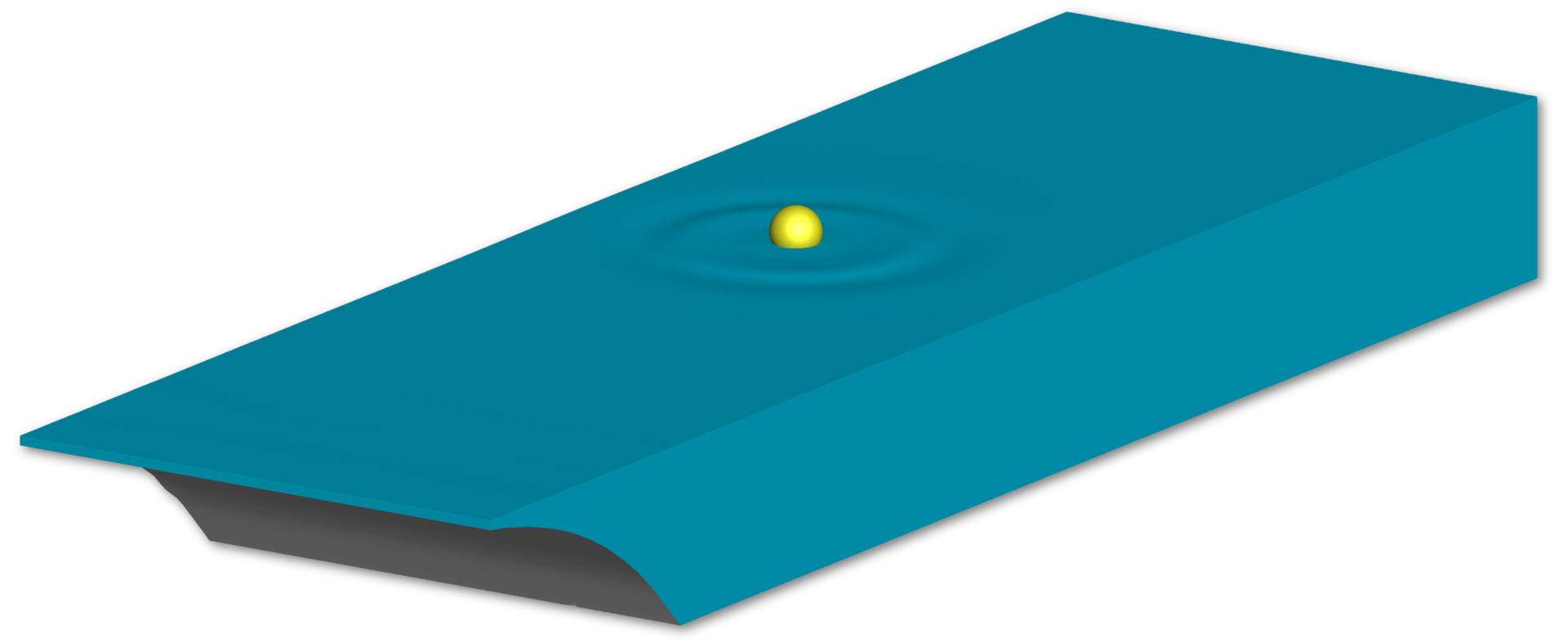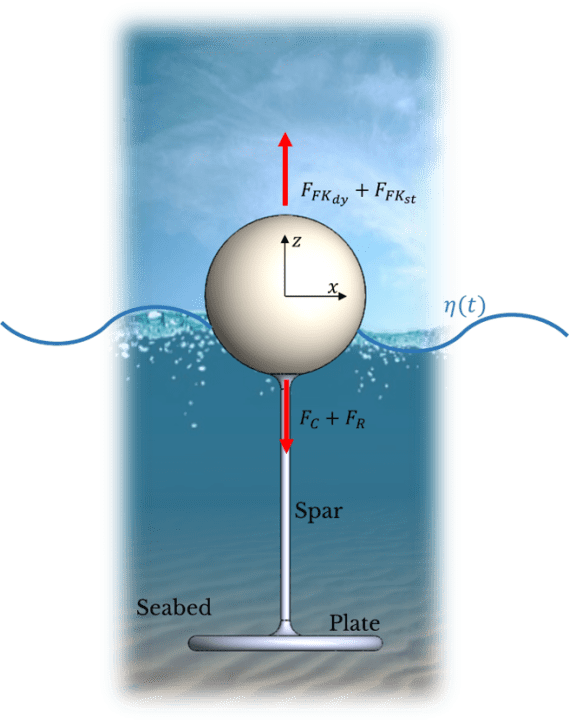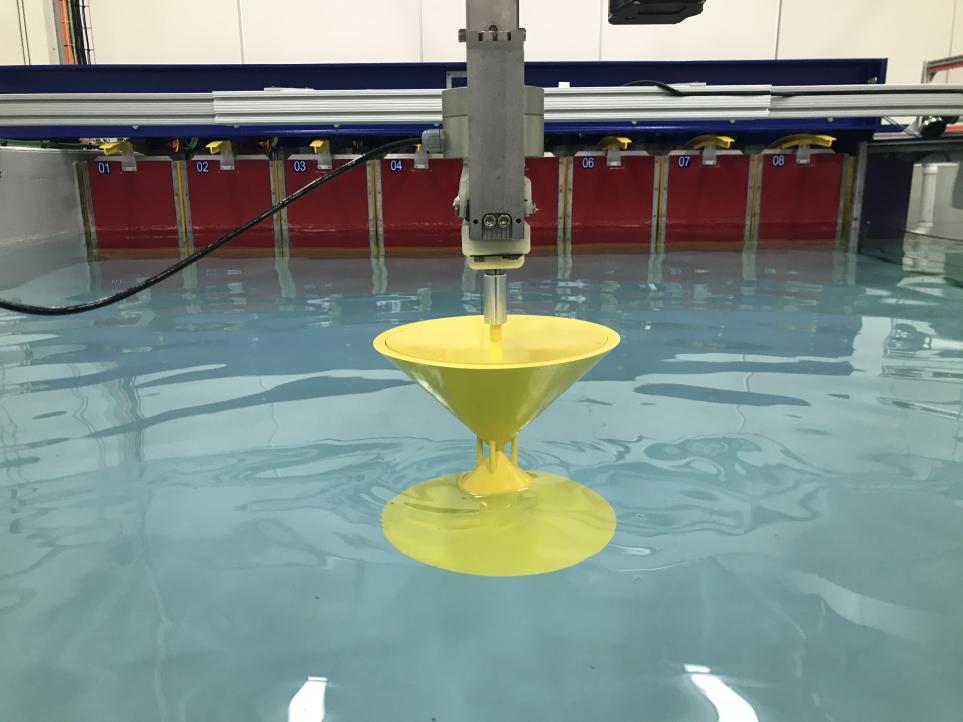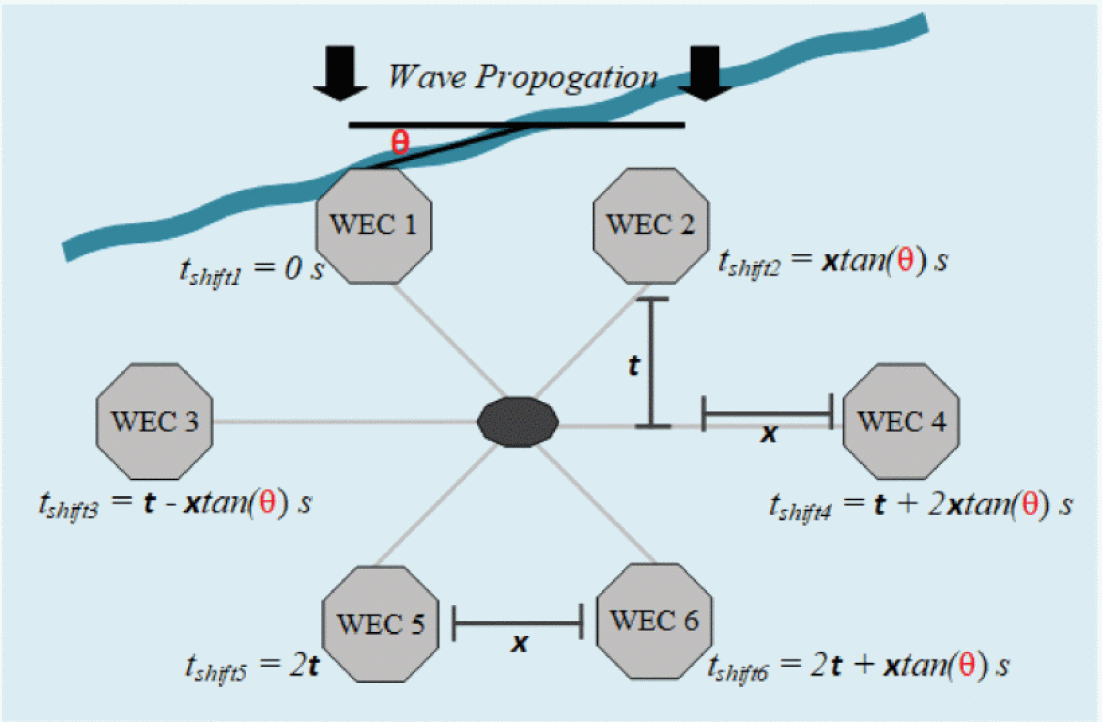Encompassing Vision
Our modeling work is motivated by wave energy converter applications with complexity ranging from approximate to detailed CFD models. Approximate models are used by real-time WEC controllers, while CFD models help us explore new ways to enhance energy extraction. Large-motion, nonlinear response regimes are particularly interesting in uncovering new performance opportunities and providing students with research challenges.
Simulation Software
We use various software, including WEC-Sim, WAMIT, OpenFoam, COMSOL Multiphysics, ProteusDS, ShipMO3D, and custom MATLAB/Simulink/Simscape applications for both batch and real-time implementations.
Since we use our models to extrapolate new behaviors, model validation is critical. This is done using our MTWave facility, open-source data, and collaborations with other researchers.
Get Started
If you need modeling or simulation wave tank services or would like more information on partnering with us on a research project, we invite you to send us a message.

Validating CFD Models
We recently validated a CFD model of MTU Wave that captures the fluid-structure interaction with any number of floating bodies, including beach and wall reflections.
Modeling the damping characteristics of submerged porous structures is another area of expertise with application to wave energy extraction. Using a buoy dynamometer system, the validation of nonlinear, dynamic Froude-Krylov force models for shaped buoys is also done in MTU Wave.
Neural Network Architecture for Mooring Lines.

Point Absorber Model
Free Decay Test Setup.

Cone-cone buoy hydrodynamic forces validation.

Hexagonal Arrangement of the Six WEC Array.